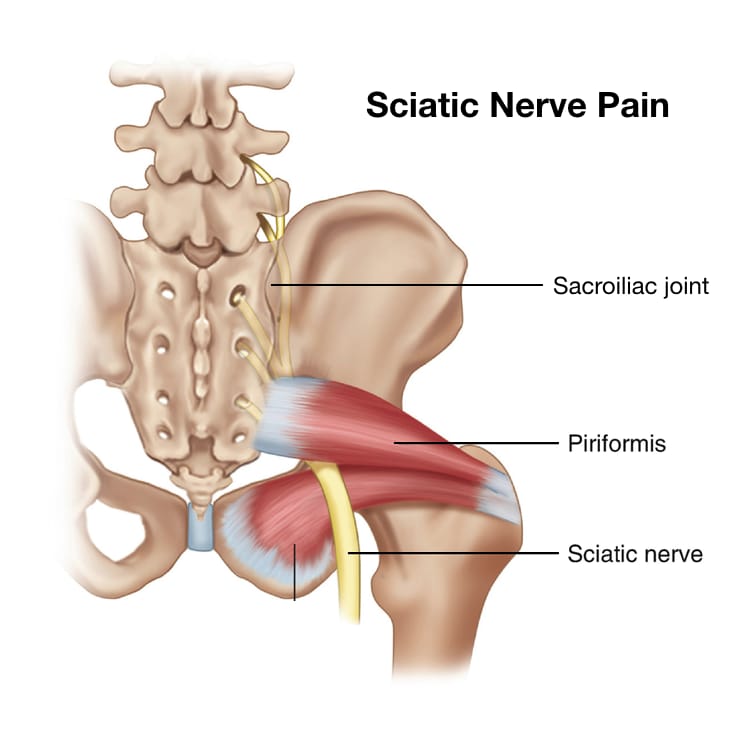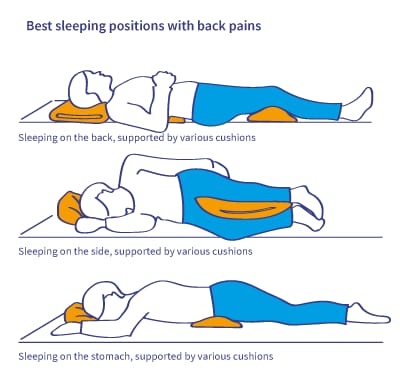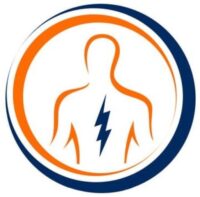Physical therapy is the first-line treatment for treating and relieving sciatica symptoms. Before we look at the ‘physical therapy for sciatica’, first understand what is sciatica and what are the causes this?
What is Sciatica?
The sciatic nerve is the largest nerve in the human body and is formed by the union of L4, L5, S1, S2, & S3. These five nerves go deep in the buttocks, near the front surface of the piriformis muscle down the back of the thigh, to the heel and sole of the foot.

CAUSES OF SCIATICA PAIN:
Sciatica is caused when there is pinching or compression in the sciatic nerve by-
- Disc herniation
- Spinal stenosis or narrowing of the spine
- Bone spur on the spine
- Compression of the sciatic nerve by ‘wallet’ – pain caused by a large wallet while sitting
- Piriformis syndrome
- Increased risk with age, obesity, or diabetes.
SYMPTOMS OF SCIATICA:
- Radiating pain from the lower spine to the buttocks and down the back of the leg
- Difficulty in sitting, walking, & standing
- Numbness and tingling in legs
- Pain can vary from a mild ache to a sharp, burning sensation
- Pain that gets worse with movement
RISK FACTORS:
Risk factors for sciatica:
- AGE: Age-related changes in the spine is the most common cause of sciatica. As we age, the disc starts to degenerate which may cause it.
- OBESITY: Excessive body weight increases stress on the spine. This can contribute to the compression of nerves and hence may cause sciatica
- OCCUPATION: A job that requires heavy weight lifting, and back twisting might contribute to it
- DIABETES: Diabetes can cause nerve damage which could be a reason for sciatica pain
- PROLONGED SITTING: People with a sedentary lifestyle are more prone to develop sciatica than those with an active lifestyle
- POOR POSTURE: It could be a big reason for developing sciatica. The slouched sitting position can put stress on the disc leading to sciatica pain.
PREVENTION:
Prevention of sciatica is not always possible. But taking some steps to protect your back can be beneficial.
- EXERCISE REGULARLY: To keep your back strong, paying attention to your core muscles is very important. Both the muscles in your back and in your abdomen are very important for keeping the perfect posture.
- MAINTAIN GOOD POSTURE WHILE SITTING: Choose a seat with good back support and with armrests. Place a small pillow behind your back to maintain the normal curve of the spine
- SLEEP IN CORRECT POSTURE:
- If you sleep on your back: Prefer a thin pillow under your head. Add 1 or 2 pillows under your knees may help ease back pressure
- If you sleep sideways: Place a thick pillow to support your head and neck. Also, add a pillow between your knees to keep your spine in neutral alignment.
- If you sleep on your stomach: You should put your head on a very thin pillow or directly on the mattress. Place a thin pillow underneath your pelvis to keep it back in alignment. But sleeping on your stomach should be avoided as much as possible due to the risk of neck strain.

Physical Therapy For Sciatica
When you diagnose with sciatica, physical therapy could help you in many ways. Many modalities like TENS, diathermy, traction, etc used in physical therapy are very beneficial for your sciatica pain.
Some at-home treatments as well as the treatment you can get at the physiotherapy clinic are described below:
Rest
Complete bed rest results in a loss of 1-3% of muscle strength per day. Therefore, no more than 2 days of absolute bed rest is recommended. Avoiding doing activities or just laying in bed can worsen your condition.
Applying ice pack
You should apply ice on the area of pain only during the first few days of symptoms.
For applying ice, wrap the ice pack or some ice cubes in a towel and then apply it over the affected area for a short interval of time.
This will reduce swelling and inflammation and may serve as a mild anesthetic.

Heat application
You should apply ice during the first 2-3 days of symptoms. After 2-3 days, switch to heat. Heat will help relax the muscles in your back. It will reduce muscle spasms and hence will reduce pain.
Medications
- Non-steroidal anti-inflammatory drugs (NSAIDs) are medications that are used to relieve pain, reduce swelling and inflammation. Medications such as aspirin, Advil, or ibuprofen can help you to reduce pain and inflammation.
- Muscle relaxants
- Corticosteroids: oral or injected
Deep heat (diathermy)
It will decrease spasms and pain, increase collagen distensibility. Usually used for sub-acute or chronic injury.
Ultrasound is most commonly used. Microwaves and shortwaves are rarely used because of increased risk and high equipment costs.
TENS
Tens (transcutaneous electric nerve stimulation) help to decrease spasm, pain, edema, inflammation, & atrophy. It increases circulation to help remove inflammatory byproducts.
It is best during the acute phase of injury.
Mechanical traction
Help to relieve pain by intervertebral distraction, stretching muscles, and other soft-tissue structures.
Dry needling
Nowadays, the dry needling technique is also being used by many physiotherapists to help relieve pain symptoms. READ MORE: Dry needling
Stretching
Stretching your muscles can help you to get rid of the pain. Exercises in physical therapy can help you to improve your posture and strengthen your muscles.
Piriformis Stretches:
- Sit on a chair and cross your left ankle over your right knee. Keep your spine lengthened while sitting. Bend at the hips until you feel stretch deep in the buttocks. Don’t overstretch.
- From this position. push your left ankle into your right thigh, isometrically contractiong your piriformis, for 6 seconds. You may also push your left knee down with your left hand to feel the stretch.
- Lie on your back with legs extended.
- Bend your right leg up to a right angle and clasp your hands around your thigh
- Lift your left leg and place your right ankle over the left knee.
- A stretch should be felf, not pain. Return to the starting position.
- Do it for 3 times and then switch the leg.
- The stretcher is lying prone on a table. Bend right knee to approximately 90 degrees and roll your leg towards the floor.
- Other person needs to stand at the stretcher’s right side and place his left hand on medial ankle and right on the sacrum.
- Now the stretcher begin slowly to push against his partener’s hand, attempting to bring his leg across the midline.
- He holds this isometric contraction of the piriformis for 6 seconds.
- After this push, the stretcher relaxes and inhale deeply.
- Repeat 2 to 3 times.
- Can be done without a partner as shown below.
This simple stretch will loosen your piriformis and gluteal muscles.
- Lie on the back with legs extended. Keep your feet flexed upwards.
- Bend your right leg up and clasp your hands around knee
- Now, pull your right knee towars your left shoulder.
- Hold for 30 seconds and then return to the starting position
- Do it for 3 times and then with the another leg.
OTHER STRETCHES TO RELIEVE SCIATICA PAIN:
This stretch helps to create space in the spine and hence relieves pressure on the sciatic nerve.
- Sit upright with your legs extended in front.
- Bend your right knee and place your right foof next to your left thigh.
- Keep your left leg straight.
- Place your right arm behind you and touch floor with your right hand, gently twisting your body to the right.
- Hook your left arm at your right knee.
- Release the pose gently and switch to the other side.
- Place your right foot on a chair or surface. Surface’s height should be below the hip level.
- Bend your toes towards your body and make your leg straight. Feel the stretch in the hamstrings.
- Bend your upper body towards the foot. This will intense the stretch.
- Hold it for 30 seconds and then do this with other leg.
- Stand with your right leg and foot stretched in front of you, with just your heel on the floor.
- Bend forward from your hips until you feel a stretch in your right hamstring.
- Hold this position for a few seconds.
- Do it 3 times.
- Sit with your back straight, knees bent, and the soles of your feet together.
- Pull your legs as close to the floor. This will lengthen your short adductors.
- Place your arms against the inside of your knees, then attempt to bring your knees together against your own resistance.
- Hold the contraction for a few seconds and repeat it 3 times.
The Takeaway:
Sciatica pain is a painful condition that is very common in today’s life. It can make your life more challenging by hindering your daily activities. But today, we have discussed many ways of physical therapy for sciatica that can be quite effective for you.
Try these stretches at home and see a physiotherapist whenever you see any symptoms of sciatica pain.
ALL THE BEST 😉

